
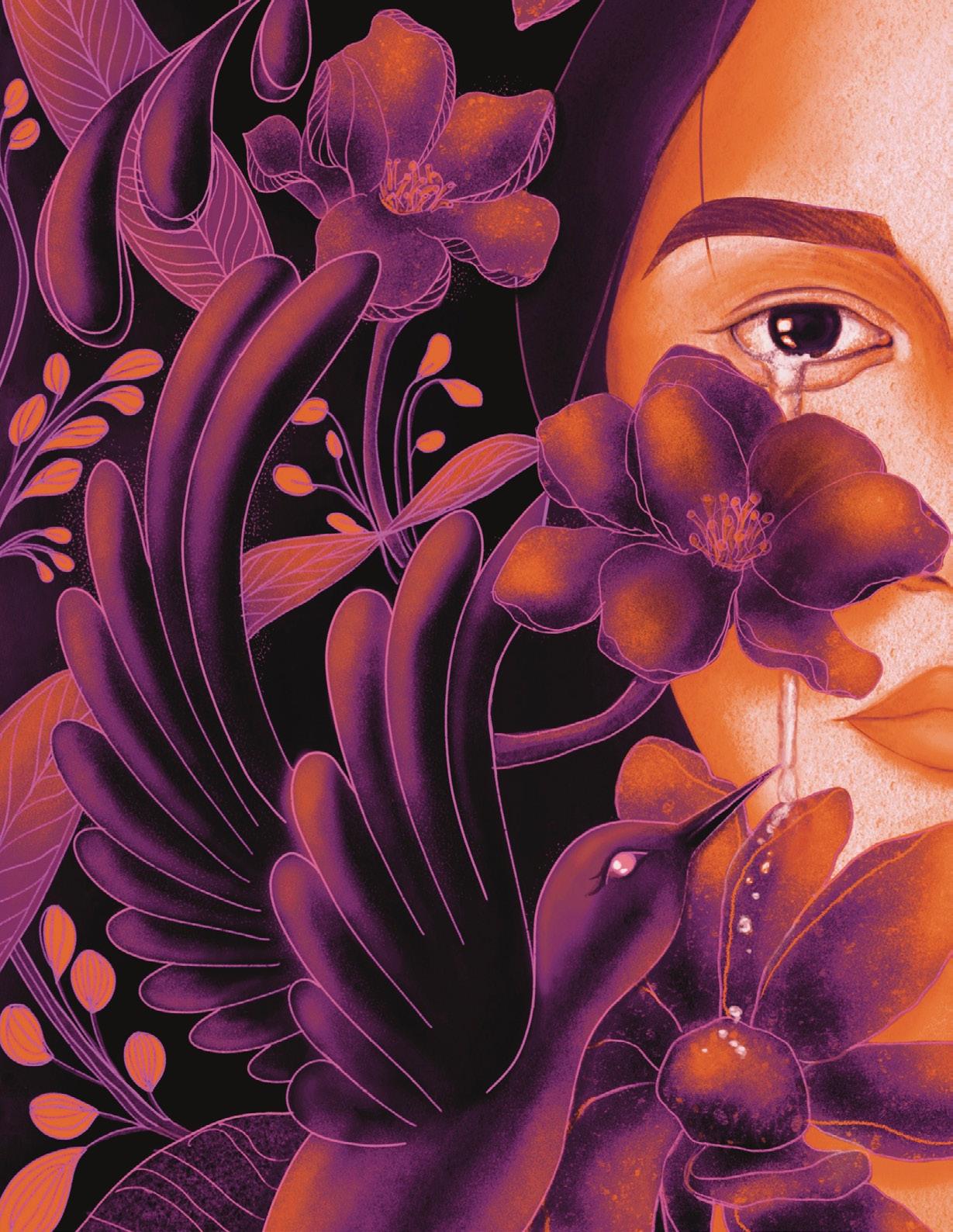

Newsletter of the History of Art Department at the Fashion Institute of Technology
Volume 5, Spring 2023




Newsletter of the History of Art Department at the Fashion Institute of Technology
Volume 5, Spring 2023

This year has had its ups and downs as we continue to recover from the disruptions of the Covid-19 pandemic. In the big picture, however, I am happy to report that we are moving forward with several initiatives and developments that will make FIT a more beautiful, modern, and inclusive community in the coming years. On the subject of beauty, we all have watched our New Academic Building rise from its foundations over the past two years with excitement and great expectations. This new facility, which will open in January 2024, will provide us with a bright and airy lounge area in addition to inviting exhibition spaces, modern classrooms, and a welcoming new entrance on 28th street.
At the same time this gleaming facility has been rising, in the History of Art department we have been engaged in our own renovations, updating more than fifty courses with expanded prerequisites, accurate and inclusive titles, and current bibliographies. This year we made major progress de-centering Europe in the curriculum with the addition of a new foundational course, Crossroads: Global Art and Its Histories, 1450–1750 (HA 115), created by Professor Jennifer Babcock and taught by Professor Maggie Williams. We also
added Introduction to Fashion History: Materials, Motifs, and Meanings (HA 118); and Art and Social Justice in New York (HA 246). These courses will satisfy the new SUNY requirement for a General Education course in Diversity, Equity, Inclusion, and Social Justice.
raphy, Black Dandyism, and Afrofuturism. She is currently the Andrew W. Mellon Postdoctoral Fellow at Smarthistory where she has contributed essays on works by Malick Sidibé and Santu Mofokeng as well as a Female (pwo) Mask

It has been inspiring to review the depth and breadth of our offerings, which have been enhanced by new full time History of Art faculty. This year we welcomed our new tenure-track faculty member, Dr. Andrea Vázquez de Arthur. Andrea has a PhD in Art History from Columbia University and works on pre-Columbian and Latin American art. Her new course, HA 242: Andean Art and Civilization, expands our curricular offerings in the visual culture of the Americas. We are also pleased to announce that we will welcome another tenure-track faculty member in the fall. Dr. Kristen Laciste will join the department next year as a specialist in African Art. Kristen holds a PhD from the University of California, Santa Cruz, with research specialization in The Society of Ambiance Makers and Elegant Persons (La SAPE) of Kinshasa, Democratic Republic of Congo, the subject of her dissertation. Kristen also researches contemporary African photog-
Applications for our Art History and Museum Professions program have risen notably for next year, thanks to the tireless efforts and enthusiasm of our AHMP Chair, Professor Alex Nagel. And I am pleased to be wrapping up my year of “department sitting” as Acting Chair this year as we look forward to the return of Professor Justine De Young following her sabbatical year spent working on a new book.
Finally, I want to give a shout out to our invaluable department members who keep the wheels on the bus even when the road gets rocky—Molly Schoen, our Visual Resources Curator, Department Technologist Nanja Andriananjason, and Jennifer Fantozzi, our Department Coordinator and font of all knowledge about how FIT works. Managing the department this year without them would have been impossible.
Wishing you all a wonderful and relaxing spring and summer as we emerge from dark days,
Professor Amy Werbel, PhD Acting Chair, History of Art Department
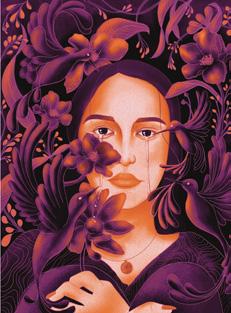

We are so very grateful to the entire staff and team at The Museum at FIT (MFIT), who supported three AHMP seniors to curate an entire exhibition for Gallery FIT at The Museum at FIT in April 2023. Claire McCardell: Practicality, Liberation, Innovation, curated by Nico Frederick, Christina Pene, and Emma Sosebee (all AHMP ‘23), delved deep into the museum’s Study Collections as the curators researched, designed and organized a powerful display highlighting the work and legacy of influential fashion designer Claire McCardell (1905–1958). This is the first time that students from our AHMP program had the privilege to curate an exhibition at Gallery FIT in the museum, and we are so grateful for this opportunity, and to Nico, Christina and Emma for doing the hard work [figs. 1–3] (see p. 11) The exhibition received great reviews and was featured in Women’s Wear Daily. For her work as Museum Facilitator at the Museum at FIT, Emma was awarded a prestigious student award from the FIT Couture Council in September 2022, and Nico was awarded this year’s Departmental Medal for their academic achievements, leadership, and overall contributions to our community.
the field. Thank you to everyone who supports AHMP students, for giving us opportunities to engage with them, and for providing inspiration.

Over the 2022–2023 academic year, students succeeded in many other prestigious institutions and projects in New York City. In Fall 2022, Mackenzie Lindsay (AHMP ‘23) interned with the Collections Registrar’s office at the Metropolitan Museum of Art, and Nico Frederick interned at the New-York Historical Society. Joi Berry (AHMP ‘23), who also won FIT's prestigious Student Government Association Marion K. Brandiss Extracurricular Service Award [fig. 5], interned at the Whitney Museum of American Art. Aida Perovic (AHMP ‘24) worked at The Broken Kilometer, an



The Museum at FIT also hosted some fantastic programs over the academic year, in which students from AHMP participated and a great number of AHMP junior students worked as museum facilitators. Our continued partnership with MFIT enables us to collaborate on other programs and courses, too. Using the museum’s Study Collections for a section on textile conservation in HA 319: Art History and Conservation, for example, museum staff allowed us to learn more about the crafting of condition reports by engaging with the collections [fig. 4]. Access to such materials is important as it helps students on our campus receive an introduction to

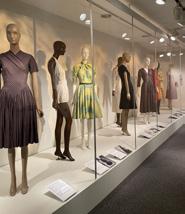
art installation created by Walter De Maria (1935–2013) inside a street-level storefront in SoHo, and Tsaia Dawson (AHMP ‘24) worked at Patchogue Arts Council MoCA. In Summer 2023 Stella Hobart (AHMP ‘24) will hold a prestigious internship in Berlin in Germany thanks to the ArtBound program. Nicholas Florido (AHMP '24) received a prestigious 10-week Museum Education and Employment Program (MEEP) internship in the American Museum of Natural History for this summer.
Alumni of our program continue to thrive in the museum world: Natalie DeJesus (AHMP ‘19), the Metropolitan Museum of Art’s Research Assistant for the Michael C. Rockefeller Wing, Art of the Ancient Americas, assisted in the preparation for the fantastic exhibition Lives of the Gods: Divinity in Maya Art, which opened at the Metropolitan Museum in November 2022. This exhibition featured impressive monuments and objects from ancient sites in Guatemala and Mexico. Natalie was kind enough to organize a tour behind the scenes with current AHMP juniors in February 2023 [figs. 6-7]
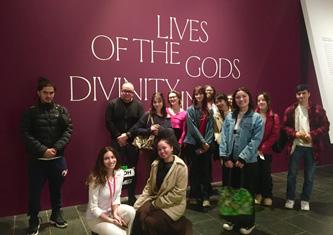
 Fig. 1
Fig. 5
Fig. 6
Fig. 7
Fig. 4
Fig. 2
Fig. 1
Fig. 5
Fig. 6
Fig. 7
Fig. 4
Fig. 2

In 2023, Darnell-Jamal Lisby (AHMP ‘16), who is Assistant Curator of Fashion at the Cleveland Museum of Art, curated an exhibition on Egyptomania fashion and a virtual exhibition project that featured sixty looks across six decades of the Council of Fashion Designers of America. Liana Arkay (AHMP ‘22) is about to finish the University of Glasgow’s Art History: Collecting & Provenance in an International Context MSc program. Katherine Prior (AHMP ‘22) is now a Screen Studies MA student at the Feirstein Graduate School of Cinema in Brooklyn. Chrysa Tasioula (AHMP ‘22) is now working at Phillips Auction House, Joyce Cruz (AHMP ‘21) is working at Poster House, and Ava Ferguson (AHMP ‘21) is a full-time Gallery Assistant at James Fuentes Gallery. John Paul Jang (AHMP ‘22), who founded the AHMP Association (AHMPA), received not one but two (!) awards from the Student Government Association and is now working at the Brooklyn Museum [fig. 8]. In Fall 2022, the AHMP senior students

tan Museum of Art’s Asian Art Department [figs. 10–11]. Not only did we visit the offices and storage rooms, but we also were able to learn about Japanese painting conservation. Daira Eden took us behind the scenes to introduce us to the work that goes into managing a new long-term installation. AHMP students also met with many other museum professionals. These include Joelle Seligson and Katrina Dumas (AHMP ‘11) of the Brooklyn Museum, Nicole Leist and Elizabeth Abbarno of the Morgan Museum and Library, Shameekia Shantel Johnson (AHMP ‘21) of Harper’s Art Gallery, Angelica Pomar (AHMP ‘21) of the Bronx Museum, and Sally Morgan Lehman, owner of the Morgan-Lehman gallery in Chelsea [fig. 12]. Behind the scenes of the American Museum of Natural History, we also met with Mai Reitmeyer.
In HA 319: Art History and Conservation, we met with Carolyn Ricciardelli, Object Conservator at the Metropolitan Museum of Art who introduced students in the class to the fascinating repair of a fallen sculpture from the Museum’s collection [fig. 13]. Devon

received praise for their contributions in co-hosting events at the annual College Night at the Morgan Library and Museum (see a special contribution by Nicole Leist, Manager of Educational Programs, Morgan Library and Museum, p. 12).
As always, all our courses feature many visits and guest speakers from New York’s vast art and museum-related field communities. This year’s guest speakers included Desiree Gordon, Programs and Strategy Director at Brooklyn Arts Council [fig. 9] Alison Clark took us behind the scenes into the storage and conservation areas of the Metropoli-

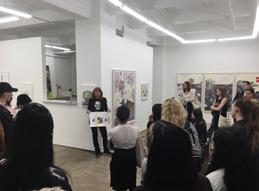
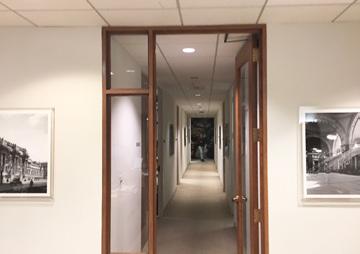
Lee, a graduate student at New York University’s Institute of Fine Arts Conservation program, spoke about her work on the AMNH’s spiders, owls and other animals. We visited the New York Art Conservation Team in the Brooklyn Navy Yard and the Metropolitan Museum of Art’s Textile Conservation Department [figs. 14–15] Kremer Pigments manager and artist Roger Carmona came to the class, which Atefe Shekofte and Omid Oudbashi from the Art University of Isfahan in Iran also visited [fig. 16]. Throughout this new course, students also learned how to craft condition reports for objects in the Church of St. John the Baptist nearby FIT [fig. 17], with enthusiastic support from church historian Barbara Brandes.
This was the first year of a new collaboration with the University of York in England. Three AHMP seniors studied at the University
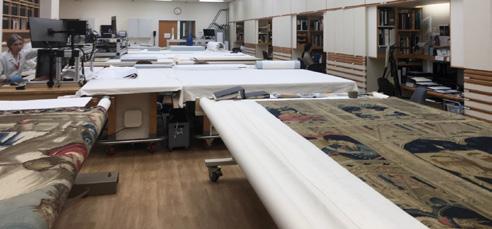
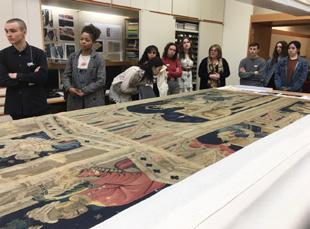 Fig. 8
Fig. 12
Fig. 13
Fig. 14
Fig. 15
Fig. 9
Fig. 10
Fig. 11
Fig. 8
Fig. 12
Fig. 13
Fig. 14
Fig. 15
Fig. 9
Fig. 10
Fig. 11
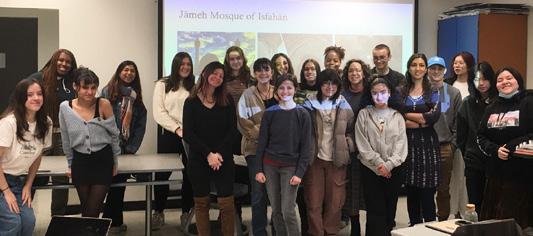
of York in the fall, while two students from York were our guests. Malaya Salcedo, Chloe Foster and Artemis Burgos enjoyed their time as AHMP students in York, while Molly Hoon and Niamh Sansom came from across the Atlantic. Molly Hoon and Sofia Santos (AHMP ‘24) enjoyed an evening on art conservation at the Brooklyn Museum in September 2023.
Earlier in the fall, the AHMP Association, now spearheaded by Christina Pene (AHMP ‘23) invited Tiffany Lucke, Social Media

Content Producer at the Metropolitan Museum of Art, for an event on November 17, 2022 [fig. 18]. We also spent a fantastic two days in Boston and Harvard in March 2023 (see p. 10). In fall 2022, students from FIT’s art history classes visited Thierry Mugler: Couturissime, the first retrospective of the French designer at the Brooklyn Museum and enjoyed a tour by exhibition curator Matthew Yokobosky [fig. 19]. They also visited the Morgan Library’s exhibition She Who Wrote: Enheduanna and Women of Mesopotamia 3400-2000 BC, where they received tours by co-curator Erhan Tamur and Educator Nicole Leist [figs. 20-21].
As we close on another academic year, I thank all of our students, alumni, faculty, staff, guest speakers, and professional colleagues for their time, efforts and continued support of the Art History and Museum Professions program. ▪
Assistant Professor Alex Nagel, PhD Chair, Art History and Museum Professions Program


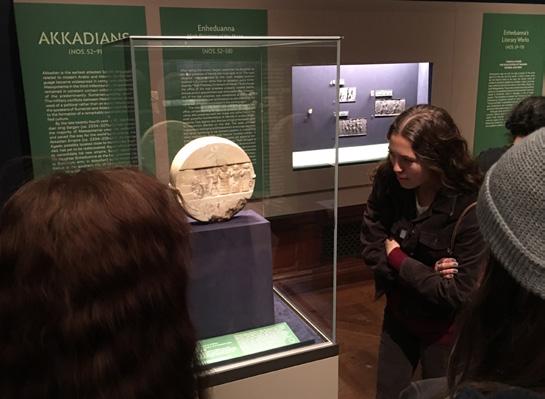
The FIT Art History and Museum Professions program acknowledges that it is located on Lenapehoking, the ancestral homelands of the Lenape people. We recognize the continued significance of these lands for Lenape nations past and present; we pay our respects to the ancestors, as well as to past, present, and emerging Lenape leaders. We also want to recognize that New York City has one of the largest urban Indigenous populations in the United States. We believe that addressing structural Indigenous exclusion and erasure is critically important and we are committed to actively working to overcome the ongoing effects and realities of settler-colonialism within the institutions where we currently work.
Fig. 16 Fig. 19 Fig. 20 Fig. 21 Fig. 18 Fig. 17Last fall, I joined the History of Art department at FIT as a full-time assistant professor, and I am filled with gratitude for the warm welcome I have received! Having gone to graduate school in New York City, I know what an extraordinary place this is for teaching and studying art history, and I am overjoyed to be back. Since my arrival last summer I have enjoyed getting reacquainted with the many firstrate museums in the area and, given FIT’s location, I am getting to know some of the Chelsea galleries as well.
I moved back to the New York City area from Ohio, where I was a curatorial fellow at the Cleveland Museum of Art and later taught art history courses at the University of Cincinnati and at Miami University. During my fellowship at the Cleveland Museum, I had the opportunity to curate an exhibition on mola textiles. Molas are hand-sewn cotton panels that are made into blouses (also called molas) and form the centerpiece of traditional dress among Indigenous Guna women in Panama. Through my work on this exhibition, I developed a profound admiration for the ingenuity, creativity, and craftsmanship of these garments and an interest in learning more about the evolution of Indigenous American fashion. I look forward to developing several new courses here at FIT that will explore various aspects of Latin American and Indigenous American art and visual culture.
One course I have already created and am now teaching is Andean Art and Civilization (HA 242). The art of the precolonial Andes—what is today Peru, Ecuador, and Bolivia—is my particular area of study and I am thrilled to share this unique artistic tradition with the FIT community. This course surveys a range of artistic styles that developed across the central Andes from the rise of complex civilization from around 3000 BC up until the 1530s. Though the artistic styles covered in this course are diverse, certain shared foundations of artistic practice demonstrate how Andean attitudes towards art and

image making are as related to each other as they are distinct from those of the Western world. We often see, for example, a preference for abstraction over naturalism, an emphasis on the conceptual, and a surprising tendency to produce representational images in ways that make them practically invisible to the eye. These traits contribute to an aesthetic that at times looks surprisingly modern, which is actually what initially drew my interest to this field.
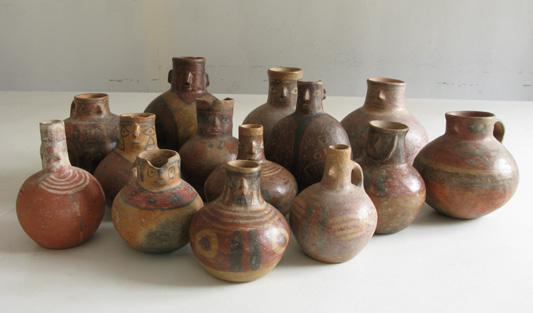
I first encountered ancient Andean art while backpacking through South America after graduating from college. Knowing very little about the history of the Andean region, I was astonished by the diversity of artistic styles represented in Peruvian museums, and I became very curious about the people who produced these works. I visited a few of the Inka sites around Cusco—such as Pisaq, Sacsayhuaman, and Machu Picchu—and before long I found myself traipsing across the Andes to explore some of the more far-flung archaeological sites of Peru, including Huacas de Moche, Chachapoyas, and Chavín de Huantar, as well as Tiwanaku and the Island of the Sun in Bolivia. This experience of traveling abroad marked a critical turning point in
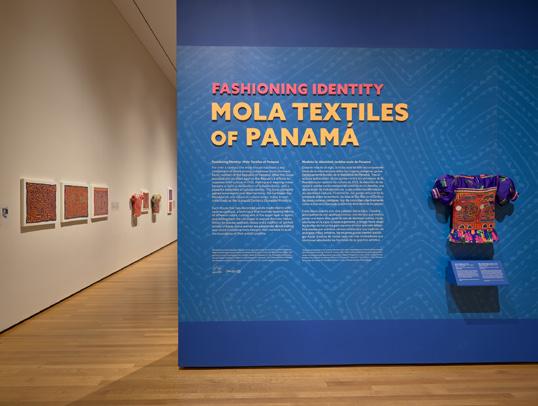
my life and started me down the path of studying and teaching Latin American art history.
The next course I plan to build here at FIT will focus on modern and contemporary art from Latin America. In this course, I want to explore the relationships Latin American artists had with artists and movements in Europe and the United States throughout the twentieth century, contextualizing influential artists from places like Mexico, Venezuela, and Brazil within the greater history and development of modern art. This course will furthermore consider the ways in which artists and art movements of Latin America also looked inward to local histories and identities to produce work that is uniquely Latinx. Building on the theme of Latinx identity, I look forward to creating an additional course that takes a longer view of Latin American art history. By reaching back to the era of the classic Maya, moving through the colonial period, and continuing up to the present day, this course will explore the construction of Latinx identity via its various expressions in the visual arts.
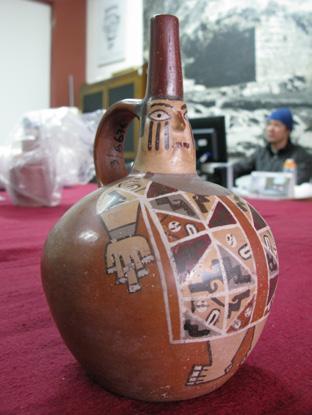
Finally, I am delighted for the opportunity to contribute to FIT’s curriculum in museum studies. In teaching the course Senior Seminar: Museum Exhibition (MP 461), it has been my pleasure to get to know the students of this year’s graduating class majoring in Art History and Museum Professions and I cannot wait to hear about what they go on to do next. Over the course of the semester, we have had many spirited discussions about the strengths and weaknesses of over a dozen exhibitions here in New York—both exhibitions we have visited as a


class as well as those we have learned about through student presentations. I look forward to teaching this course again with a new class of AHMP students and a fresh selection of special exhibitions on view. Once again, I am simply overcome by the cultural wealth that we at FIT are fortunate enough to have at our doorstep here in New York City. ▪


Last fall, I deposited my doctoral dissertation, titled “‘A Decorator in the Best Sense’: Ludwig Mies van der Rohe, Lilly Reich, the Fabric Curtain Partition, and the Articulation of the German Modern Interior,” and on February 1, 2023, I graduated with a Doctorate in the History of Art from the City University of New York (CUNY) Graduate Center. As the opening paragraphs of my dissertation abstract explain:
Contributing to the burgeoning study of the domestic interior, a field of inquiry existing in the interstices of architecture, design, interior decoration, and material culture, this dissertation presents a thematic study of the modern domestic interiors of German/American architect/designer Ludwig Mies van der Rohe (1886–1965) designed in collaboration with fellow German architect/designer Lilly Reich (1885–1947) during the 1920s and early 1930s in Weimar Germany. Inspired by a revealing but hitherto overlooked statement by Philip Johnson in the catalogue for the influential 1932 International Style exhibition at the Museum of Modern Art in New York that referred to Mies as “a decorator in the best sense,” it focuses primarily on a particular aspect of Mies’s and Reich’s interiors, the moveable fabric partition wall, through the lens of the modernist bias against decoration and the hierarchical relationship between architecture and interior decorating. Reich’s significance as Mies’s partner, both professional and personal, is considered in relation to that gendered bias.
An underexplored but consistent feature of the Neues Bauen (modern architecture in Germany), the curtain partition was a central functional component in Mies’s celebrated open or free plan that also operated on a number of complex symbolic levels. Comprising both soft furnishing (an element of interior decor) and architectural form, the fabric wall was

highly referential and innately opulent rather than reductive and abstract, reflecting key aspects of Weimar culture with its emphasis on dynamic movement, while on a more private level, indicative of a conception of domesticity undergoing profound change.
Using an interdisciplinary methodological approach, this study analyzes the curtain partition of Mies and Reich in relation to a series of significant themes, including functionalism and the nature of materials, interiority, domesticity, the decorative, the European fascination with the “primitive,” the tension between the timeless and the fashionable, constructions of gender and identity, and viewer subjectivity and reception. Operating as a kind of hinge between architecture and interior design/decoration, between opulence and simplicity, structure and surface, and historicism and modernism, the soft partitions of Mies and Reich constitute a dynamic entity that manifests the complex moment in which it was conceived.
The thesis for my dissertation was born during a graduate school course on Mies van der Rohe held in Spring 1998 at Columbia University and co-sponsored by the Museum of Modern Art. The course was a component of the major Mies retrospective organized jointly by the MoMA (Mies in Berlin) and the Whitney Museum of American Art (Mies in America), held in 2001. My dissertation advisor and mentor, Dr. Rosemarie Bletter, recommended me for the class, which was taught by Dr. Barry Bergdoll of Columbia’s art history department and the late Terence Riley, former curator of architecture and design at MoMA. As part of our study of Mies’s and Lilly Reich’s interiors, my study partner Miriam Torres and I interviewed the late

American architect Philip Johnson in his office in Mies’s Seagram Building in New York, quite a thrilling proposition for two graduate students! Johnson’s role in Mies’s rise to canonical status in the United States is well recognized, and hearing his anecdotes about organizing MoMA’s seminal 1932 Modern Architecture: International Exhibition was exciting, to say the least. That summer, I had the opportunity to travel to Europe with Dr. Bergdoll, Terry Riley, and members of the Mies seminar to study the buildings of Mies, and the interiors by Mies and Reich, in person. My knowledge of German (honed during four years in Munich in the 1980s) proved most helpful. In addition, I was invited to contribute two essays in MoMA’s Mies in Berlin exhibition catalogue.
Over the next years I researched my topic, using primary source material at the Mies van der Rohe Archive and the Lilly Reich Archive at MoMA as well as the Mies van der Rohe Papers at the Library of Congress, along with the extensive holdings of the New York Public Library’s Art and Architecture Collection in the Schwarzman Building. I also made extensive use of our own Gladys Marcus Library here at FIT, in particular, our Inter-library Loan program (a big thanks to everyone in ILL!) I successfully defended my dissertation in January 2007, with minor revisions, a task that took considerably longer than anticipated! And those revisions were finally completed and approved last fall 2022, making my progress, if not the longest gestation period for a dissertation from start to completion, than surely one for the record books.

(which in retrospect I do not recommend!) Unexpected twists of fate of a personal nature also resulted in disruptions to the writing process—in other words, sometimes life gets in the way.

In the end, though, my belief that Mies’s and Reich’s interiors, and specifically the idea that their use of “soft partitions” as a key element in their composition of the modern home deserved serious scholarly attention never wavered. I presented my research at a series of scholarly conferences, and a portion of my dissertation was published in the Bard Graduate Center’s journal Studies in the Decorative Arts in 2009. My next step is to revise the manuscript for publication as a book. In the meantime, I have been able to apply my expertise in the history/theory of the modern interior toward the creation of a new course at FIT: The Modern Interior as Space and Image (HA 220), which I am delighted to teach every fall. Perhaps most importantly, I can honestly say to our students that it is possible to overcome obstacles, to achieve your goals, and to graduate, at any age, no matter how long it takes, if you believe in yourself and your work.▪
The reasons for this extended time frame are varied and complex; my son was born in November 1998 (the Columbia/MoMA research trip to Europe had, fortunately, taken place just before I was no longer able to fly). Further, having discovered my love of teaching during grad school (the CUNY Graduate Center art history program was in fact founded to provide professors for the CUNY colleges), I served in both adjunct and fulltime professor capacities at various institutions in New York State and New Jersey throughout the period of my graduate coursework and the dissertation writing process. In 2007, I was hired for a tenure-track teaching position as design historian at SUNY Buffalo State College, and I commuted for a semester to work via JetBlue every week from my home in Brooklyn
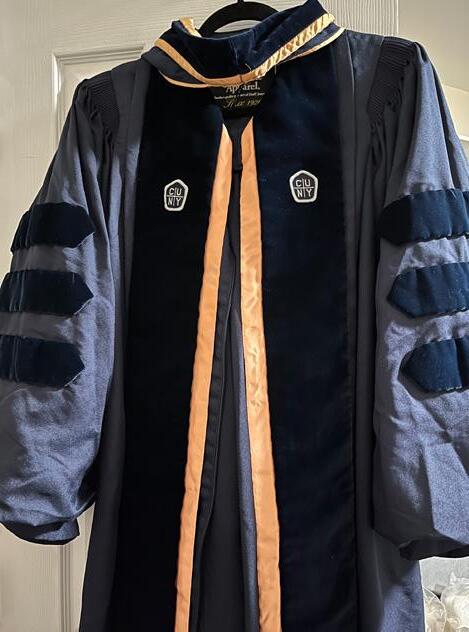
Photos from the Art History and Museum Professions Association’s (AHMPA) March 2023 trip to Boston and Cambridge, MA.


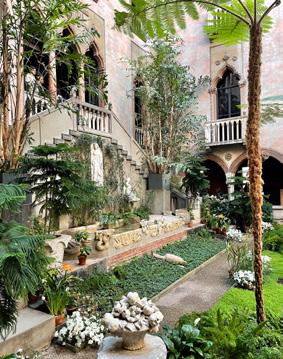



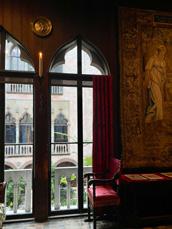




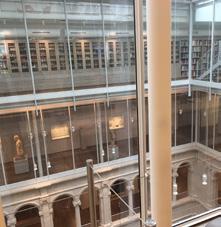
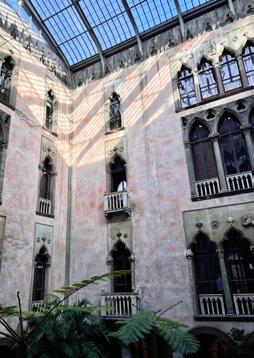


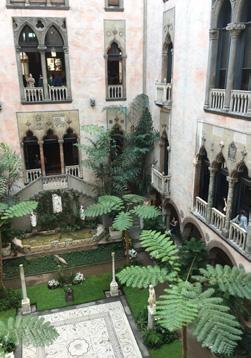

Art History and Museum Professions (AHMP) seniors Nico Frederick, Emma Sosebee, and I had the unique experience of curating the first AHMP-led exhibition at the Museum at FIT, which highlighted the American designer Claire McCardell (1905–1958). Claire McCardell: Practicality, Liberation, Innovation was on view at the Gallery MFIT from April 5th to April 16th, 2023. Showcasing garments from the museum's study collection and archival material from FIT’s Special Collections & College Archives (SPARC), the show aimed to provide visitors with a better sense of who McCardell was, not just as a designer, but also as an individual who helped shape the fashion industry into what it is today.

McCardell assisted in introducing various practical elements in fashion that we, as consumers and wearers, often overlook today, including ballet flats and pockets in dresses. When World War II necessitated rationing restrictions, she worked with dancewear manufacturer Capezio to create a simple, comfortable, and fashionable shoe for women to wear to their new jobs outside of the house. Many fabrics, including wool and leather, which had previously been used for clothing, became regulated for soldier use during the war. Capezio and McCardell found a loophole in these restrictions, as manufacturing dance shoes in leather was still acceptable.
Throughout the struggling years of the war, McCardell used innovative techniques to bring women's comfort to the forefront of their fashions. Her iconic dress, the Pop-
over, allowed women to dress easily without assistance. The designer also found ways to incorporate fastenings in her garments that were practical for the wearer while creating a fashionable touch. In the photograph below, a Popover featured in Claire McCardell: Practicality, Liberation, Innovation from the museum's study collection highlights McCardell's fondness for hook-and-eye closures. At the same time, the tricolor gingham pattern brings attention to her love of classic textiles. You can read more about the exhibition and McCardell on our AHMP Instagram and the AHMP blog.



When my fellow curator, Nico, suggested Claire McCardell to be the focus of our exhibition, I had to admit that I was unfamiliar with her work. While working on this project, I noticed this was a running theme: McCardell's legacy was mostly unknown to the public, despite her lasting impact on the fashion industry. When I would tell friends or family members about our project, every time I mentioned McCardell's name, the question "Who?" followed. It was a tremendous pleasure to learn about her work, to expand my knowledge of fashion history, and to share her story and designs with the world during our exhibition.
Working alongside the Museum at FIT team was highly hands-on; each staff member wanted us students to be as involved in the process as possible, including the placement of the mannequins in display cases and the lighting hues. It was an honor to work alongside my co-curators Nico and Emma; I do not know how our exhibition would have been possible without their technology, communication, and organizational skills. I'm incredibly thankful to each person at the museum for their attention to detail and for welcoming us into their family, and to Professor Nagel for taking us under his wings and preparing us to be the best curators possible.
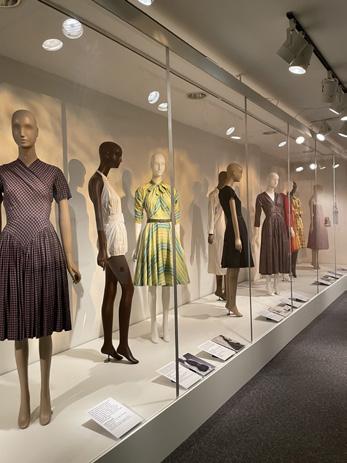
As an undergraduate student, having the opportunity to work on a project of this scale during our senior year was an incredible test of self-discipline and indulgence, as it felt like every thought I had involved Claire McCardell. Every time I wear a dress with pockets, or when I choose ballet flats over heels, or when the zipper/button on the top of my dress is within arm’s reach, I now know who to thank. Thank you, Claire McCardell, for your impact on fashion.
On Wednesday November 2nd, 2022, the Morgan Library & Museum hosted its annual College Night. The 2022 event was a true return to pre-pandemic engagement, and student attendance surpassed levels seen even before Covid-19.
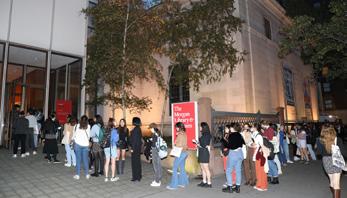
College Night at the Morgan is a yearly event, with free and after-hours access to the Morgan for all current college students, both undergraduate and graduate. It is also an opportunity for Fashion Institute of Technology students in the Art History and Museum Professions program to design an activity for their peers and gain experience in museum education and programming.
The 2022 student committee consisted of Nico Frederick, Christina Pene, Sofia Santos, Raleigh Smith, and Emma Sosebee. Their team created a scavenger hunt for the Morgan’s historic library with Morgan memberships as prizes.


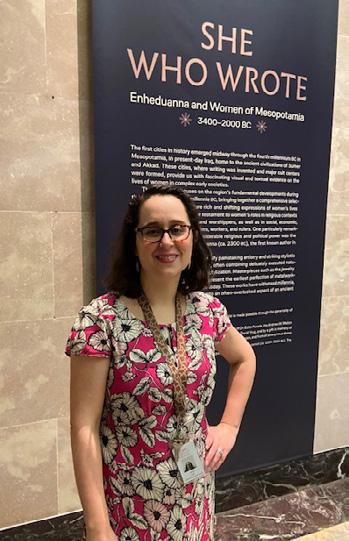
This collaboration, entering its fourth year in fall 2023, engages students with Nicole Leist, Manager of Education Programs at the Morgan, for a series of behind-thescenes planning and implementation meetings that culminate in the live program during College Night. It’s an opportunity for students to design a museum activity for their peers and their community.
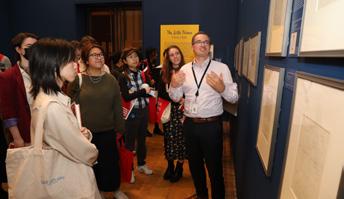

Looking for other ways to get involved at the Morgan Library & Museum?
Every Friday night at the Morgan is free admission from 5:00–7:00 p.m. Many of the Morgan’s public programs, including lectures and film screenings, are also free for students! Visit the programs page on the Morgan’s website to learn about events and email tickets@themorgan.com to reserve.

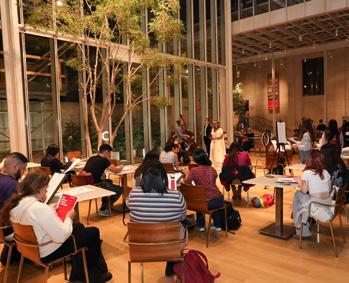
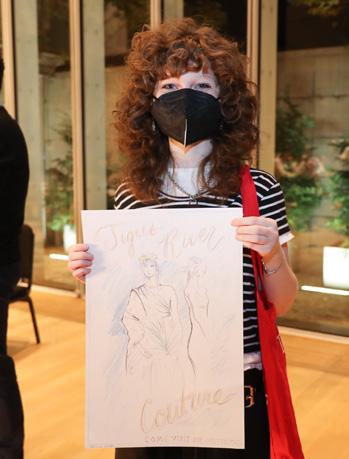
The idea for the collaboration with Rizzoli came from the goal to promote art and creativity in one of the most inspiring places for many of us: a bookstore. Throughout the centuries, it was often the stories narrated in books that inspired patrons and artists to create art, while artworks, their meanings, and their contexts also have been examined and discussed in published writing. For this competition, my students designed window displays for Rizzoli Bookstore that were inspired by Baroque art and at the same time showcased a fashion item in connection with New York Fashion Week in February. Their creative responses exceeded my expectations and proved to me how masterpieces from the past can keep inspiring us!

The concept of my design centered around the theme of the memento mori, which was highly popular in the Baroque era. It promoted the idea that life and its earthly pleasures are fleeting, unless they are immortalized by art: art grants fleeting beauty eternity. This is what I have tried to showcase in my window design, which included items usually associated with memento mori—a skull, flowers, a mirror reflecting the image of the passerby, etc.— as well as my fall 2022 term garment. It was inspiring to learn from my professor about the rich history of the Baroque art period in the first place, and it was thrilling to be able to bring to life my most favorite aspects of this history with the help of the store staff and to learn how to execute an idea on a much larger scale than I am used to.

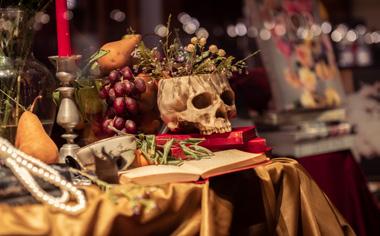
 Eveline Baseggio Omiccioli, Ph.D.
Andrew Sherburne, Fashion Design, Film & Costume Design ‘25
Eveline Baseggio Omiccioli, Ph.D.
Andrew Sherburne, Fashion Design, Film & Costume Design ‘25

After graduating from FIT in 2021, I took some time off to decide how I wanted to pursue my future. While looking into graduate programs, I had trouble finding something I connected with. I wanted the graduate program that I picked to be as enjoyable as FIT’s Art History and Museum Professions major program was for me. The online Masters in Library and Information Science graduate program at St. John’s University caught my attention for the wide variety of specializations I could pick from.
I’m finishing my first semester as a graduate student, and it has been an amazing experience. Not only have I learned about the
degree, but I have learned a lot about myself and how I want to pursue my career. I have decided to specialize in Archival Studies in the hope to land a career as an archivist after I graduate. AHMP has prepared me for this program in numerous ways. Having a background in Art History and Museum Professions, I draw many connections throughout my studies in library science. It’s fascinating what different information institutions can have in common. I find myself comparing museums and libraries often and appreciate having my background knowledge in my studies. I’m actively pursuing research for internships located in archives. I intend on graduating in December of 2024, and I’m excited to see where life will take me after.
Paige Johnston, AHMP ‘21
During my academic career at FIT, I had the joy of being able to experience two study abroad semesters in Florence, Italy at the Lorenzo de’ Medici Institute. One semester took place during my associate’s degree in Fine Arts and the second during my bachelor’s in Art History and Museum Professions, in part thanks to scholarships such as the FIT Global Scholar Award. The experience I had studying abroad was invaluable both for the cultural experiences as well as the academic knowledge I gained. Studying outside of the United States widened my scope of the art world and enabled me to have a more well-rounded academic career. While studying, I had access to an amazing list of in-depth art history courses where we paired lectures with class trips to stunning historical basilicas, palaces, and museums. Other

courses focused on contemporary art practices, which provided insights as to how art management practices differ between Europe and the United States. Additionally, studying abroad presents the unique possibility to learn a foreign language, an invaluable skill to have when pursuing a career in the arts. Being situated in the center of Italy made it easy to travel throughout the country in beautiful cities such as Rome and Naples, where there’s even more ancient art history to experience. I was also lucky enough to visit other nearby countries such as Switzerland, Spain, and France. I’m so appreciative of my study abroad semesters and enjoyed them so much that they influenced me to continue my academic career abroad, where I’m currently completing a master’s degree in Economics and Management of the Arts and Cultural Activities at Ca’ Foscari University of Venice, Italy.
Ann Christensen, AHMP ‘21

On April 17th, 2023, the Eco-Visions in Art and Design class (HA 321) went on a field trip to Freshkills Park, built on the landfill that received New York City waste from 1948 until 2001. As we stepped out of the FIT van, we found ourselves on a strange land—a beautiful landscape built on abject foundations hidden from sight. This site made palpable the accumulation of diverse knowledge we have acquired throughout the course, interfacing the natural and the artificial in art and design, conceiving the environment beyond the human mirror stage. Please read the reflections by one of the students, Lydia Sant. We all came back with slightly different attitudes towards our trash—loving it more than before. Art and everyday life coexist.
–Adjunct Associate Professor Sandra Skurvida, PhD
Sant, Packaging Design ‘23
What does it mean to meet the place you’ve always lived in? Freshkills Park, a landfill-turned-park in Staten Island, is welcoming New Yorkers to a place that feels both native and new. Freshkills embraces the storied history of the landfill, and to know this is to simply stand in the park. In North Park, an area open to class tours and various creative initiatives, gas pipes stick out of the ground, telling the story of the masses of waste stabilized underneath the grassy knoll. You can see the blue shadows of Manhattan in the distance, and smell the warm sulfur of the Freshkills compost facility. You are standing on what was once a wetland, then an impenetrable landfill, and finally a gentle mound, now home to newly growing Indian grass.
The park relies on highly-engineered ecological systems to restore biodiversity. The ground is a landfill cap—six layers of geotextiles and soil, compounding and equalizing the masses of landfill waste beneath. The indigenous osprey and great egret are returning, symbols of possibility for the park. The most pressing challenge for the team at Freshkills is to communicate with Staten Islanders that this former local burden is now a flourishing ecological haven.


Thus, encountering Freshkills is a reintroduction of sorts. This land contains multitudes; the tension between the jutting pipe in the ground and the smog of the city results in a new, unexplored feeling.
On reframing the way we occupy the earth, cultural theorist Bruno Latour writes in Critical Zones: The Science and Politics of Landing on Earth, “It would actually be a fairly good definition of ‘modern’ people to say that they live off a land that they don’t inhabit.” Latour explains that society at large today mistakes the world they live from for the world they live in. He suggests we need a new frame to understand the earth on a molecular level, not as a data point or a distant globe, but as a “critical zone.” Latour continues, “Suddenly, modernizers find themselves cantilevered over an abyss: the world they live from irrupts in the midst of the world they live in.” On the North Mound at Freshkills, the juxtaposition of human technology and unbridled earth helps us face our finitude. The element of confrontation between the gas pipe and nature is necessary to tell the story of the landfill: we are standing on the waste that, while aesthetically invisible, still alters the way we experience the park. Freshkills activates Latour's social idea; the North Mound is a space to live from instead of live in
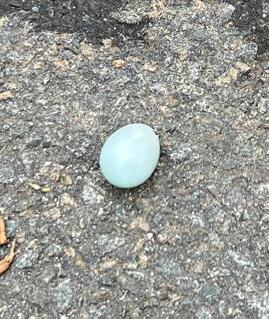

With the aid of a grant from the Botstiber Institute for Austrian-American Studies, SAMUEL ALBERT conducted research on his project, “Austro-Hungarian, Austrian, and Hungarian Art Exhibitions Abroad, 1890–1940.” He has a forthcoming article about his research in the journal Austria-American History. He also received additional grants from the Fulbright Program and from the Hungarian Academy of Science. In May 2023, he gave the lecture “Art Nouveau in Central Europe” to the 92nd Street Y.
JENNIFER MIYUKI BABCOCK gave presentations at the International Congress of Egyptologists XIII in Leiden, the Netherlands, and at the ARCE Annual Meeting in Minneapolis, Minnesota. Here at FIT, she created an online version of HA 115 (Crossroads: Global Art and Its Histories, 1450–1750) and wrote the Diversity, Equity, Inclusion & Social Justice learning objectives for HA 318 (Repositioning Ancient Egypt and Rethinking Egyptology). In addition, she undertook curricular work at the Pratt Institute, where she also teaches.
RACHEL BAUM wrote a catalog essay for LA-based artist Scott Cassidy about a recent series of paintings in which he combined mannequins with detailed portraits of friends and family in his lockdown bubble.
In July 2022, CELIA BERGOFFEN codirected a field survey in Cyprus for the Kalavasos Laroumena Archangelos Archaeological Project. She presented a paper at a conference in Paris on Cypriot pottery imitations and also gave several lectures for Silversea Cruises in Croatia, Italy, Norway, and Iceland. FIT’s Center for Excellence in Teaching awarded her a faculty development grant in February 2023 to conduct research in Bodrum, Turkey for a joint publication on part of a shipwreck cargo dated circa 1300 BCE.
Stateside, she completed two archaeological assessment reports of lots in Brooklyn, New York.
Last summer, RAISSA BRETAÑA served as Programming Consultant and On-Screen Talent for the series “Follow the Thread” on Turner Classic Movies. She also appeared in a UNIQLO “Art Speaks” video in partnership with the Museum of Modern Art and on the iHeart Media podcast Dressed: The History of Fashion , in addition to her continuing role in Glamour Magazine ’s “Would They Wear That?” video series. She gave four lectures in the past year: two in New York, one in Toronto, and one in Savannah, Georgia. She gave the presentation “Fashioning the Body for Sport and Leisure: A History of Dress and Textiles” for the international conference of the Association of Dress Historians in London, England, and she wrote a review of the book FABRIC: The Hidden History of the Material World in The New York Times
JUSTINE DE YOUNG was on sabbatical for the 2022–2023 academic year to write her book Fashion and Power: Modern Women and Modern Art in Impressionist Paris.
DAVID DROGIN presented “Jacopo della Quercia’s Porta Magna , Bologna: Adaptive Style at San Petronio” for the Renaissance Society of America Conference in San Juan, Puerto Rico. He also presented “Bertoldo’s Battle Relief : Hercules, Mercury, and Medicean Sculpture in Context” for the Sixteenth Century Society Conference in Minneapolis.
NANCY EDER contributed the chapter “From Horse-Drawn Carriages to Internet Searches: How Teaching the Art of India Has Changed in the Twenty-First Century” for the forthcoming volume Teaching South and Southeast Asian Art, edited by Bokyung Kim and Kyunghee
Pyun. She continues to lecture for the Education Department of the Metropolitan Museum of Art.
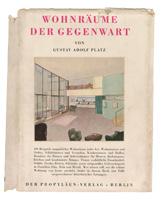
MARIANNE
EGGLER received her PhD in art history from the Graduate School and University Center, City University of New York (see p. 8). Her dissertation is “‘A Decorator in the Best Sense:’ Ludwig Mies van der Rohe, Lilly Reich, the Fabric Curtain Partition, and the Articulation of the German Modern Interior.” Last year, she was rehired at the Museum of Modern Art following the pandemic shutdown to serve again as a gallery lecturer, a position she began in 1998. In March, she also presented a gallery lecture and tour of the Wrightsman Galleries for French Decorative Arts at the Metropolitan Museum of Art. Additionally, she was nominated for the SUNY Chancellor’s Excellence in Adjunct Teaching award as well. and will be presenting this summer at FIT’s Adjunct Summer Institute.
BRONTË HEBDON PATTERSON received two fellowships: the Veronica Gervers Research Fellowship in Textile and Fashion History at the Royal Ontario Museum in Toronto in 2022, and a Global Research Initiative Fellowship at New York University in 2023. She also gave the lecture “Laurel, Oak, and Peacock: The Politics of Men’s Historical Fashion” in connection with the Gervers Fellowship.
In April 2023, PAUL MELTON gave a virtual lecture, “Mercado y sociedad: Apuntes sobre la condición contemporánea” at the Universidad Escuela de Administración de Negocios in Bogotá, Columbia. He also served on the review committee for the Association of Arts Administration Educators 2023 Annual Conference.

JÁNSZKY MICHAELSEN was the editor for the English-language text in the bilingual photo book Selling Polaroids in the Bars of Amsterdam, 1980: Bettie Ringma & Marc H. Miller. It will be published by Lecturis in June 2023.

ALEX NAGEL’s book, Color and Meaning in the Art of Achaemenid Persia , is currently in production and will be published with Cambridge University Press. He is also co-editor of the forthcoming volume Working on Stones in the Achaemenid Empire: Methods, Theories and Techniques, and he co-authored an article on new evidence for ultramarine blues on the surface of stone monuments at Persepolis. In November 2022, a book he co-edited, Cave and Worship in Ancient Greece, became available in paperback. After he received the Club Advisor of the Year Award from the FIT Student Government Organization, he continued to serve as advisor to the Art History and Museum Professions Association (AHMPA), for whom he co-organized a trip to Boston and Harvard in March 2023. He secured a paid internship for an AHMP student in the Smithsonian Institution and helped three students to curate an exhibition at the Museum at FIT’s Gallery FIT. He co-advised PhD theses at NYU IFA and Columbia University. He contributed to the exhibition “Lights Out: Recovering Our Night Sky” which opened at the National Museum of Natural History at the Smithsonian Institution in Washington D.C. in March 2023. In October 2022, he was invited to speak and chair a conference session hosted by the Sultanate of Oman Sultan Qaboos Center in Washington, D.C. As Chair of the AHMP program, Nagel partnered
with FIT’s Office of International Relations to create more Globally Connected at FIT events in the 2022–2023 academic year, prepared an FIT visit by the National Association of Schools of Art and Design (NASAD), and co-organized an event with Jennifer Babcock on “Keeping the Gods Alive Through Art and Fashion.” Earlier in 2023, he served as a judge in the Brooklyn Public Library’s annual Fashion Academy, the theme being “Ancient Egypt: Gods of the Runway!” At the Metropolitan Museum of Art, Dumbarton Oaks, and the Smithsonian Institution, he collaborated with researchers on examining Persepolis stone fragments for evidence of ancient paint and polychromy. He also reviewed papers for the Journal of Field Archaeology and other publications.
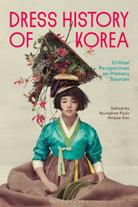
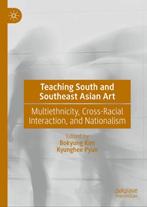
KYUNGHEE PYUN co-edited three books published in the past year: Teaching South and Southeast Asian Art, Dress History of Korea: Critical Perspectives on Primary Sources, and Expanding the Parameters of Feminist Activism. She also edited a special issue of Journal of Religion and the Arts and contributed the article “Religiosity and Spirituality in Linda Mary Montano’s Anorexia Nervosa” to it. She published “Girls in Sailor Suits: Constructing Soft Power in Japanese Cultural Diplomacy” in the journal Global Perspectives on Japan and continued her column “Kyunghee Pyun’s New York Sketch” for the South Korean art/photography magazine Wolgan Sajin. Her many public speaking engagements included lectures at Miami University in Oxford, OH; the Textile Museum at George Washington University in Washington, D.C.; the London College of Fashion at the University of Arts London; and at Bard College in
Annandale-on-Hudson, New York. In addition, she delivered papers at five different conferences: the Global Asias 6 Conference at Penn State University; the College Art Association Annual Conference; the Dress & Body Association Annual Conference; the 19th World Economic History Congress in Paris, France; and the Association for Asian American Studies Annual Conference. She also chaired or organized a multitude of other conference sessions. These include panels at the annual conferences of the Association for Asian American Studies and at the Association for Asian Studies, a roundtable at the New York Conference on Asian Studies, and sessions at the 50th Annual Mid-Atlantic Region Association for Asian Studies conference and at the American Comparative Literature Association in Taipei, Taiwan. She served as Vice President on the Board of Directors at the Korea Contents Association and as Peer Reviewer for the Fulbright Program’s scholarly applications for art and music. She received a grant for Religiosity and Spirituality in Korean Material Culture to be funded by the Academy of Korean Studies. Here at FIT, she curated the exhibit Renewal of Symbols: Contemporary Minhwa Paintings at the Gladys Marcus Library, where she also served as project advisor for the exhibition Chasing a Dying River: Ghat 24 Yamuna, Delhi, India
In June 2022, ANN SHAFER delivered a lecture to heritage preservationists in Qairawan, Tunisia; she also received a Fulbright Scholar Award to travel to Tunisia. With funding from FIT’s Center for Excellence in Teaching, she attended an Islamic geometry drawing class in Granada, Spain. Recently, publishers Taylor & Francis and Bloomsbury Press both contracted her to write book chapters.
SANDRA SKURVIDA published her essay “Iranian or Not: Sociopolitical Conditions of Art Representation” in the German-language book Transcultural Interaction Through Art and Social Life:

Iranian Diaspora in Europe and Beyond . In ARTMargins Volume 12, Issue 1, she contributed the article “Barbad Golshiri’s Acts of Alterity.” She also participated in, and wrote an essay for the artist Žilvinas Kempinas’ exhibition at the MO Museum in Vilnius, Lithuania. At the SLA Art Space in New York, she curated a screening of films by Deimantas Narkevičius and moderated a talk with the artist.
Late last year, RICHARD TURNBULL curated the exhibition Making Book at Zea Mays Printmaking in Florence, MA. He also was a participant in three group exhibitions in Massachusetts and New York in April, 2023. He wrote the exhibition texts for Liz Chalfin: Iterations at Mitchell-Giddings Fine Art in Brattleboro, VT, and published the article “Jewel Box: Artists’ Books at Smith College” for the Spring
2023 issue of Printmaking Today. Additionally, he delivered two multi-part lecture series onboard Silversea Cruise liners in January and February, 2023.
New full-time faculty member ANDREA VÁZQUEZ DE ARTHUR presented the paper “Between the Sea and the Sky: Coastal Tides as Sacred Space on the North Coast of Ancient Peru” at the College Art Association’s 2023 annual conference. She also joined the Executive Board of Directors for the Pre-Columbian Society of New York.
ANDREW WEINSTEIN delivered the paper “Psychological Readings of David Levinthal’s Use of Toys in Hitler Moves East and Mein Kampf ” at the 53rd Annual Scholars’ Conference on the Holocaust and the Churches, held in Dallas, Texas. In addition, he gave several invited lectures: “Case Studies in Modern Design” at the Shenzhen International School of Design, “From Athens to MoMA: 2,500 Years of Museums and Agendas” for Road

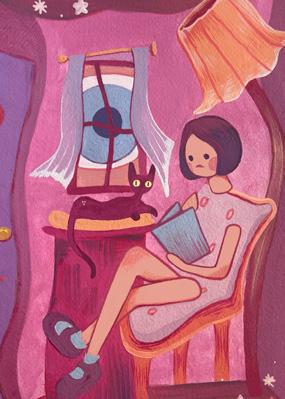
Scholar, and “New York City: Perpetual Motion Machine,” also for Road Scholar.
Acting Chair AMY WERBEL wrote the article “The Fragile Future of Artistic Expression on Campus” for Inside Higher Ed , “Proposed Federal Abortion Ban Evokes 19th-Century Comstock Act” in The Conversation, and co-authored “The Comstock Law at 150: A Highly Relevant Cautionary Tale for Today” for The Hill In June 2022, she completed a research report entitled Study of Freedom of Artistic Expression in Academic Art Museums and Galleries for her University of California National Center for Free Speech and Civic Engagement fellowship, during which time she also participated in a webinar. Additionally, she was a guest speaker at a Center for Art Law Colloquium on Censorship and Artistic Expression on College Campuses, and she was a panelist at the New York Public Library / PEN America event “Restricted Access: An American History of Book Banning.”
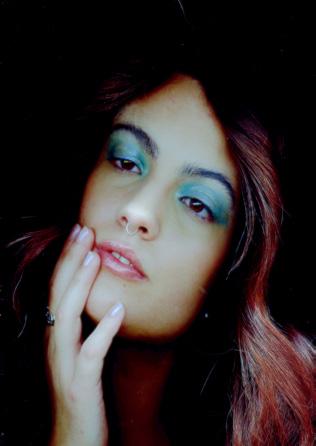
Humans are capable of a wide range of emotions, from love and compassion to rage and grief. These emotions are not only important in our personal lives, but they also have a direct impact on society as a whole. This subject will be addressed in this issue of Art History Insider ; it will study the beauty of human emotion and its relationship to society through diverse mediums.
The curated artworks featuring students from the Fashion Institute of Technology will showcase the complex and multifaceted nature of human emotions. The artworks featured will range from raw, unbridled passion to delicate nuances, exploring the varied ways in which we experience the world. The aim of this exploration is to encourage a deeper understanding of the role emotions play in our lives and in society. By celebrating the beauty of human feeling, the hope is to foster a greater sense of compassion and understanding, ultimately leading to a more connected and empathetic society.
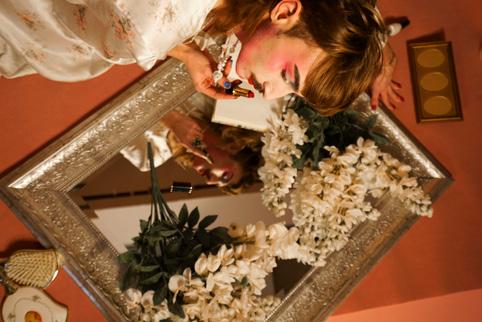

Zion Doucettperry
Photography and
Related Media '26
Untitled, 2023
24” x 36”
Photography
Naa-yu Aaminah
Fine Arts '24
SugaRot, 2018 10” x 11” Digital @naa.y.u
The artworks will also explore how emotions can be both a powerful tool for connection and empathy, as well as a destructive force when unbridled. The concepts guiding the curation of these artworks aim to inspire visitors to consider the impact they have on the world around them by reflecting on their own emotional experiences. Through the combination of art and emotion, this curation encourages visitors to participate in and reflect on their own emotional experiences. By recognizing and appreciating the variety of human emotions, we may build a more empathic, inclusive, and compassionate society.
Joi Berry (they/she/he) is a non-binary curator and arts enthusiast from north Florida with a focus on fashion and contemporary art. Berry holds a certification from Lively Technical College in Commercial Photography, an associate degree in Applied Science in Communications Design from the Fashion Institute of Technology, and is graduating in May of 2023 from FIT with a bachelor of science in Art History and Museum Professions and a minor in African American and Africana Studies. They often make it a point to highlight black and POC artists across all their work. Along with curation, they also have experience in marketing, arts administration, and communications in museums in addition to researching collections and artifacts with the purpose of the repatriation of objects to restore history. Some of their successful projects have been the curation of Relief at Studio Nine Dee in Chelsea and Black Futures at FIT, as well as producing the SS2020 Young Designers Show with Fashion Week Brooklyn X Limitless Pulse Entertainment. They are currently the administrative assistant at the feath3r theory, a performing arts and artist management firm, and the associate at Brace Magazine. See more at joidesireeberry.weebly.com
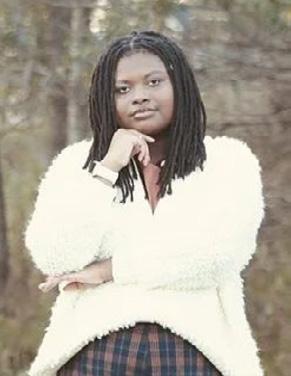
Selections from an interview with AHMP alum and Cleveland Museum of Art (CMA) Assistant Curator Darnell-Jamal Lisby. This interview has been edited; to read the original, please visit the Art History Insider blog.

Darnell-Jamal Lisby, Assistant Curator of Fashion at the Cleveland Museum of Art (CMA), recently curated the exhibition Egyptomania: Fashion’s Conflicted Obsession, on display through January 28, 2024. He joined the CMA in 2021 to develop projects rooted in fashion studies that range across the museum’s various curatorial departments. Before coming to the CMA, he gained experience working at other institutions including the Cooper Hewitt, Smithsonian Design Museum; the Museum at FIT; and the Costume Institute of the Metropolitan Museum of Art, where as a MuSe intern he helped research the 2018 landmark exhibition Heavenly Bodies: Fashion and the Catholic Imagination. Darnell-Jamal is a proud AHMP alum (2016), who has published extensively on academic and mainstream platforms, including the Fashion and Race Database, Cultured magazine, and Teen Vogue. His academic arc at FIT began with an Associate’s degree in Fashion Merchandising, followed by a Bachelor of Science in the Art History and Museum Professions (AHMP) program and finally a Master of Arts in Fashion and Textiles Studies: History, Theory, Museum Practice.
DP: Many congratulations on the Egyptomania exhibition! Thank you for taking the time to do the interview. I would like to know more about the background of the exhibition. What inspired you to organize an exhibition with this theme?
D-JL: Like most people, ancient Egyptian culture intrigues me as well. After seeing a handful of recent collections by different ateliers, inspired by ancient Egyptian art, I thought it would be pretty timely to execute the project. Additionally, when I started curating the show, it was the 100-year anniversary of the discovery of Tut’s tomb.
DP: How do you create a narrative or theme for an exhibition, and what strategies do you use to engage and educate your audience?
D-JL: Like any curator, you try to find glaring stories that con-
nect the various objects I was thinking about compiling for my checklist. One of [these] was about cultural appropriation and if it applies to the use of ancient Egyptian culture as inspiration. Finding topics, like cultural appropriation, that connect with contemporary events are accessible ways to engage the audience. Furthermore, I used the broader topic of ancient Egyptian art and culture as inspiration for fashion to pique the audience’s interest, and then guided the audience to the denser topics like cultural appropriation and identity.

DP: Could you walk us through the process of curating the exhibition, from selecting the artwork to designing the installation?
D-JL: Well, it can get complicated, making it difficult to convey in a few short words. I had to lay out the history of Egyptomania and early Egyptological research that spurred the Egyptomania movement; thus, I had to pull examples across the CMA collection–from decorative arts to drawings–to help develop that foundation. As part of the CMA strategic plan, which helps guide the mandates of each museum employee, I also had to think about an intervention in our CMA Egyptian gallery. Interventions are ways that you can bring outside art into permanent collection galleries, emphasizing new ways to analyze various works of art and collections. I wanted to have one of the fashions that I chose displayed in the Egyptian gallery [and decided on] a Givenchy ensemble from the Fall 2016 collection that the Givenchy archive graciously allowed me to use. Additionally, I wanted to highlight Egyptian fashion
design voices, so I incorporated two gowns by designer Yasmine Yeya and a purse by Sabry Marouf.
Once I developed the checklist, I had to develop the didactics, illuminating what I found in my research that I was developing. Once the didactics went through rigorous edits, it was time to work with the exhibition design team to create the physical show. I worked with them to create the blueprints and what inspirations I wanted to evoke. Lastly, in conjunction with the conservation team, headed by Sarah Scaturro, who was the former chief conservator of the Costume Institute, we figured out what type of dress forms we wanted to use. We also partnered with renowned costume dresser Tae Smith to help dress the forms. After that, the rest is history…
DP: Who inspired you to become an art curator, and how did you get started?
D-JL: After studying Andrew Bolton’s career way back in high school, it was his journey that encouraged me to become an art and fashion curator. I started just like you, in the Art History and Museum Professions program at FIT, taking in every bit of education and internship experience I could. After finishing the program, I matriculated into the Fashion and Textiles Studies MA program at FIT, and again, I absorbed as much as I could through my education and internships.

DP: What are some of the challenges you face as a curator ?
D-JL: I think the biggest challenge is just getting institutions to understand the value of fashion in the art historical realm because once that’s understood, life becomes easier [in terms of] budgets, stakeholders’ interest, and ethical considerations. As mentioned, budgets can be tough, but at some point, you must go with the flow and know that God will provide a path moving forward… Of course, everyone’s path to peace is different.
DP: What are some of the most memorable exhibitions you’ve curated or participated in, and what made them stand out for you?
D-JL: When I helped curate the Willi Smith: Street Couture exhibition with Alexandra Cunningham Cameron and Julie Pastor at Cooper Hewitt, I had the best time exploring the stories of all the people Smith knew during his life and how much they loved him. It was those stories that helped develop the exhibition. When I curated Egyptomania: Fashion’s Conflicted Obsession, I found all my research discoveries very exciting too, like understanding that the ancient Egyptians were unified by religion, not racial identity— as race is a recent construct in our human history. I also loved dressing the mannequins and physically mounting the exhibition, seeing all the work we did at the CMA come to life.
DP: How do you see the role of fashion curators evolving in the future, and what do you think are some key trends and challenges facing the field?
D-JL: Fashion curators will continue to push boundaries, searching for new topics that lean into contemporary culture, discovering new contributions by unsung figures and cultures, because fashion is such an accessible medium that touches on so many audiences’ lived experiences. I think the biggest challenge right now for fashion historians is not being afraid to tackle dense topics. As curators, our jobs are to make a complicated topic layman. Moreover, looking to diverse perspectives and celebrating a broader degree of contributions is very important and will help solidify fashion as a critical part of academia.
DP: Thank you so very much for taking the time to answer the questions. Many congratulations on Egyptomania: Fashion’s Conflicted Obsession!
Egyptomania: Fashion’s Conflicted Obsession will be on display at the Cleveland Museum of Art until January 24, 2024. The exhibition website has more information and extras on related events and more. ▪
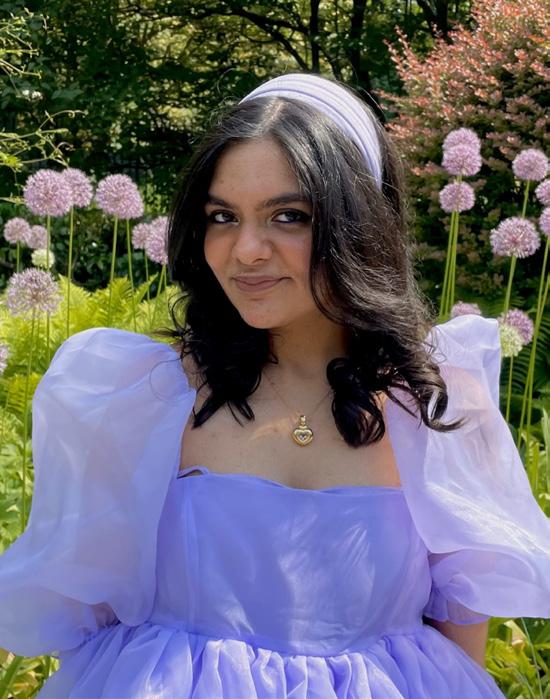
With bits and pieces of leaves and bark and fragments of beetle wings, Cylosa spiders of the Peruvian rainforest compose sculpted images of themselves in their orb webs that they spin with seven different kinds of silk emitted from spinnerets on their abdomens [fig. 1]. These larger-than-life spider sculptures deceive predators who would shutter to attach such a massive spider. The sculpted forms also allow the spiders to camouflage their bodies inside the massive sculpture as they wait for prey of their own; this act of concealment is known as crypsis and is common in the animal world. Beyond and alongside the practical uses of these spider-made spider sculptures, the animals themselves take time to find just the right-sized fragment, just the right color to create these works.

Dead Sea sparrows along the western Mediterranean camouflage their carefully-built nests in Tamarix trees, whose branches support the particular weight and geometry of their constructions [fig. 2]. Each spring, mockingbirds begin to compose a new song that they will later edit, sampling over twenty different components culled from the songs of other birds, urban car horns, and swishing sound of wind–which is currently being studied at the
Max Planck Institute for Empirical Aesthetics using AI to help hear what the human ear cannot [fig. 3]. These are just a few instances of the myriad ways that animals express themselves to one another and across species. The colors of bird feathers and the sounds of whales may be beautiful to us, but their aesthetic qualities are made for themselves within their ecosystems; we are the interlopers and voyeurs, but rarely the intended audience.

As art historians, how can we begin to draw upon our honed skills of visual observation, description, and analysis to begin to see the way animals compose shape, color, and sound as integral elements of their daily lives? Thinking through these questions over many decades, I began to wonder what a class on animals and aesthetics would look like at FIT. So many of our students, studying anything from fabric styling to toy and fashion design, incorporate images and elements of animals into their work. How would they engage with such material and questions?


In the fall of 2022, I taught the first-ever section of HA 320: Animals, Architecture, and Aesthetics. This course of study took two years to write and included the exceptional input of Professor Sandra Skurvida and several other members of our department. In this course that I am also teaching this spring semester, each student chooses an animal to focus upon, to learn about their sensory experiences and built environments. One student researched, presented and wrote about coral, the single largest animal-made structure on the planet [fig. 4]. Another student is studying leafcutter ants, who are amongst the planet’s first agriculturalists, harvesting leaf fragments that they compost into fungus to feed their young. These ants collectively dig their nests into to the ground, then use their bodies to form the infrastructure of support which they then replace with bits of mud gathered miniscule mouthful by mouthful until they have an underground multilayered, multifunctional home not unlike an elaborate manmade subterranean city [fig. 5]

Fionnah Josef Cortezano
Illustration '25
Moonrise, 2022
12.5” x 17.8”
Mixed media
@ponafide

In these two past semesters of teaching Animals, Architecture, and Aesthetics, I have only begun to learn the complexity and beauty of animal structures and performances, and I delight with wonderment at FIT students’ boundless curiosity and creative analysis. ▪
1. Cyclosa Spider Web with Sculpted image of Spider, Peru, photograph by
Figure 2. Dead-Sea Sparrow Nest Construction. Figure 3 from Hadass R. Jessel, etal. “A modeling algorithm for exploring the architecture and construction of bird nests.” Scientific Reports (2019) 9:14772.
Figure 3. Mockingbird Song. Dotted lines mark phrase transitions analyzed by AI software at the Max Planck Institute for Empirical Aesthetics. Sound recording by Pierre Fouriquier, Xeno-Canto Database.
Figure 4. Great Barrier Reef, Australia, 2011, photograph by J. Sumerling.
Figure 5. Leafcutter Ants Transporting Leaf Fragments. Costa Rica, 2009, photograph by Hans Hillewaert.

Nick DiBello
Photography and Related Media '24
Lift Me to the Sky, 2020
16” x 20”
Digital photography dibellophotos.com
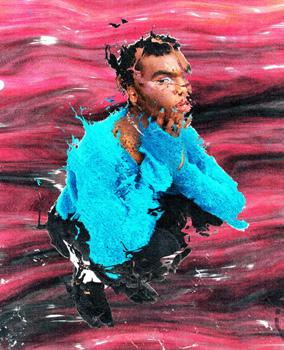
Asher Burrows
Photography and Related Media '24 phase-shifting, 2022
8” x 10”
Digital collage
@asherburrows
The George T. Dorsch Awards in the History of Art department were established with funds bequeathed to the department by one of its founding members, George T. Dorsch. An esteemed member of the department and of the FIT community, where he taught for 32 years, Professor Dorsch passed away in September 2000, leaving the farsighted and gracious legacy of an annual gift to support faculty and student professional achievement. For more information, visit the George T. Dorsch Awards page on our website.
My interest for relics began while I was working on my dissertation on the church of Santa Maria dei Servi in Venice. It is then when I realized that Venice was second only to Rome for the number of relics the city boasted. These relics played a crucial role in the construction of the city’s identity and its foundation myth, but today they lay forgotten in their churches, almost completely ignored by residents and visitors alike. The goal of my book project is twofold. On one hand, it aims at retracing the itineraries of the pilgrims who visited Venice on their way to Jerusalem between 1400–1500 in order to determine which relics were most venerated and why. On the other hand, it revisits the stories of the saints to whom they belong, which cults and works of art were associated with them, and how they contributed to shape Venice’s history. Thanks to the support of the Dorsch Award, I spent last summer in Venice researching the city’s archives and libraries for materials related to the relics and rituals of the saints that I intend to examine in my book: Mark, Isidore, Theodore, Nicholas, and
Lucy, just to mention some of the most popular ones. I came across various resources of great relevance to my project and also found new avenues of research that I would like to pursue this upcoming summer.

Eveline Baseggio-Omiccioli
More Life - A Celebration of Queer Identity Through Baroque Aesthetic

Throughout my years of studying art history at FIT, few art movements have captured my imagination quite like the art of the Italian Baroque. The extravagance, dynamic compositions, intense emotion, innovative visual effects and theatrical lighting have inspired my photography and fueled my drive to create. I would often pour over books of painting reproductions, fascinated by the idea that at the core of this
movement was a drive to seduce and persuade the viewer through the power of beauty and meraviglia. It was this movement, and its power of psychological persuasion that would become the core of my senior thesis project, “More Life.”
Thanks to the generous support of the George T. Dorsch Award, I was given the resources to travel, conduct visual research, create props and costumes, build elaborate lighting sets, cast and shoot images in studio and edit complex and painterly composites for my Baroque-inspired thesis series. The first stage of the project involved a total of five weeks of travel in Italy my ambitious itinerary brought me to over fifty unique museums, palaces, and houses of worship in Rome, Florence, Milan, Bologna and Venice.
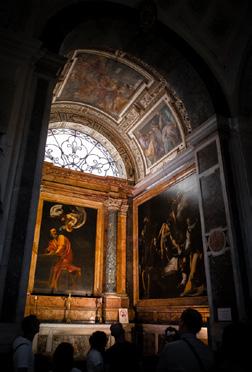
As a contemporary artist and student of art history, I was unprepared for how arresting the direct experience of these works of art would be. Despite my admiration of the work of this period, I expected that my clinical academic understanding would shield me from their sublime emotional power. I thought that, as an informed observer, I would experience admiration, and joy, but not necessarily the legendary meraviglia of these intensely spiritual and psychological works. Instead, I found myself constantly overcome, overwhelmed and transfixed time and again, as I approached each work. It didn’t matter that I had studied so many of these pieces academically that I could trace their lines with closed eyes— I saw them all as if for the first time and was moved to silence and stillness with awe. I was struck by the intensity and the immediacy that these works of art still commanded, centuries later in a world of virtual reality, space flight and artificial intelligence.
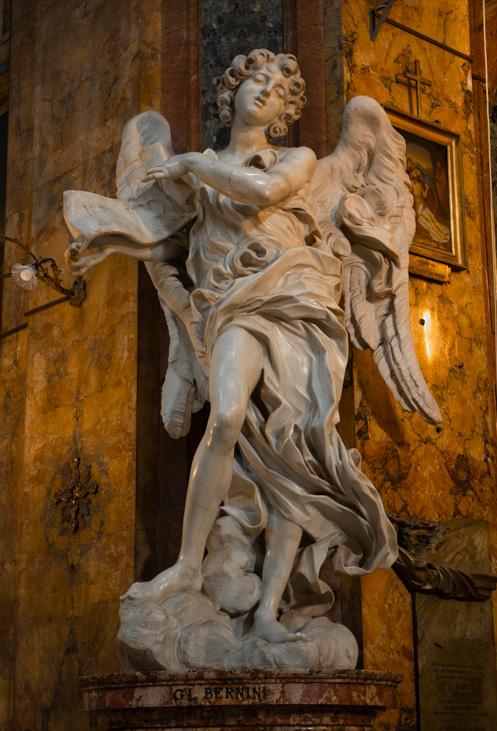

As the weeks of my travels went by, I began to consider how this kind of aesthetic persuasion could be used to elevate a community of people who have been historically marginalized and maligned by the types of institutions that commissioned these masterpieces. I thought of all the incredible queer, trans, nonbinary and gender nonconforming people, of their talents, their insights, their creativity, and I thought of my own place as a queer artist raised in a faith leveraged against me.
I was moved to create a project that would take hold of the proverbial microphone, showing the esteem in which I held the people of my community, the way I wished the world could see them. “More Life” became a series of seven large-scale images that blended studio photography, composite environments and elements photographed on my trip, and an illustrative postproduction style to create reinterpretations of historic paintings and sculptures of the Italian Baroque era, re-appropriating these works through a queer lens. Through these reinterpretations, I hope to inspire the viewer to consider a new moral paradigm of love and acceptance for all members of the queer community. I will speak in the Baroque language of “more is more” and depict my subjects as precious, beautiful, and deserving always of “More Life.”
Select images from the “More Life” series will be exhibited at The Museum at FIT as part of the Photography and Related Media BFA Thesis Exhibition Before I Leave , on view from May 16th through May 28th.


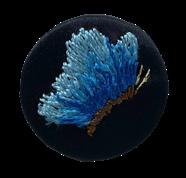
I have been teaching the Art of the Silk Road: Cross-Cultural Encounters (HA 383) for more than a decade. However, I had never touched a silk thread! I often cite historical documents addressing the delicate nature of silk thread— thinner than hair and twisted to give more shine and reflection to the finished product. I am familiar with the Seol Won Foundation, a contemporary craft organization founded by Dr. Young Yang Chung, who has written books on Asian embroidery history and techniques. Dr. Chung is now in her eighties and delegates the duty of teaching the public to her best students. Ms. Erin Byunn agreed to give a workshop to FIT students and faculty. She had previously given a public workshop in conjunction with an exhibition at George Washington University’s Textile Museum. The exhibition, called Korean Fashion: From Royal Court to Runway, was on display from August to December 2022.

Ms. Byunn came with pouches of embroidery supplies. My students in the Presidential Scholars Program, who are currently enrolled in the Silk Road course, came to participate. Some had previously taken an embroidery class at FIT; they showed proficient application of their satin stitches. Ms. Byunn brought twisted silk threads for us and black silk cloth. The project was

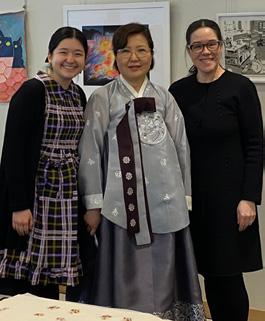
to create a 2-inch circular brooch with a butterfly pattern. In two hours, a few students were able to complete this task. This was impressive, because the silk threads were so thin, it seemed that fifty stitches were needed just to fill a small butterfly wing!
Ms. Byunn helped us correct some of our sloppier stitches and showed us how to fix our mistakes.

Professor Patrice George of Textile Development and Marketing; Professor Su Ku of Fashion Design; Professor Hilary Davidson, Chair of the MA program in Fashion and Textile Studies; Patricia Mears, Tamsen Young and Zoe Taylor of the Museum at FIT, and librarian Miyo Sandlin also attended the workshop. So did our department’s visual resources curator, Molly Schoen. It was a fabulous opportunity of experiential learning. Students



contemplated on how long it would take to complete a sixfeet tall banner of a complicated Buddhist iconography in silk embroidery, many hours indeed!

History of Art is the most popular minor at FIT, according to a 2020–2022 analysis conducted by the Office of Institutional Research and Effectiveness. Below, four students share why they chose to minor in art history.

I felt that minoring in History of Art helped expose me to a wider variety of cultures and mediums. To appreciate art is to understand it in the context of its historical position and the purpose for its creation; art history helps us to unpack those elements. I have taken History of European Art and Civilization: Renaissance to Modern Era (HA 112), Indigenous Art of North America (HA 116), Beauty: The Human Ideal in Visual Culture (HA 382), and Art of the Silk Road: Cross-Cultural Encounters (HA 383). Of all of these courses I would have to say that Indigenous Art of North America was my favorite, not only because it was a topic that I had no knowledge of, but also because it helped me to rethink my own perceptions of American history and showed me how rich the varied cultures of indigenous peoples are. I think the minor can only help me in my career, as it allows me a wider breadth and appreciation of mediums, cultures, and ideas. Knowledge is power, and art is my driving passion. My inspiration for filmmaking and music does not come from other films or music alone, but from paintings, sculptures, texts, and many other forms. The professors I've had for art history have been wonderful and passionate people who truly want to see their students learn, and who care about what they have to say.
—A.J. Lane, Film & Media ’23

—Daxian Zhou, Fine Arts ’23
I minored in History of Art to gain more knowledge about the arts and the development of my own artworks. I want to be a working artist. So all of the knowledge in art history is very useful and valuable for my artistic career.
I decided to minor in art history because FIT has such a range of art history classes that all sounded incredibly interesting to take. I really enjoy and appreciate learning about art history. It is also incredibly useful to know more about the art world as I am an

illustration major and creative person. My favorite HA class has to be HA 202: Feminist Art Histories, Theories, and Practices. The professor, Sandra Skurvida, was such a knowledgeable and enthusiastic professor who made me really appreciate feminist art. I learned so much from her teachings that it inspired me to do more research into feminist art outside of class. We went on many field trips to galleries and museums, where I was able to see feminist artwork in action. I really enjoyed taking her class and it was an inspiration to my own art and to my education. I feel like my History of Art minor helps me to understand the world of art history more and apply it to my own artwork as an illustration major. I’m continually able to apply the concepts I’ve learned about such as technique, color, composition, depth, and light/shade. I've always loved art history and world history; being able to learn more in depth about it at FIT was amazing.
—Jianna Cruz, Illustration ’24
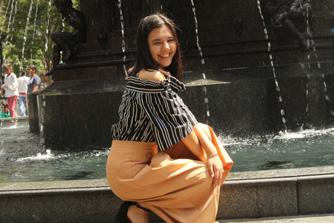
Art history goes well with the fashion design curriculum. I also think having art history knowledge helps me in my designs. And it helps me with the writing and wording for my collections.
So far my favorite of the four HA classes I’ve taken is Modern and Contemporary Korean Art (HA 240). Through that class, I was not only able to learn about modern Korean art but also learned about the culture and the people of Korean, Japanese, and Chinese history. Writing art history papers helps me with both my academic papers and my collection philosophies. Having art history knowledge helps me come up with inspirations for my collections. I love how art history also teaches about the culture and overall history of different time periods.
—Asalya Samieva, Fashion Design ’24
Visit the History of Art minor page to learn more.
The Visual Resources unit serves the image, technology, and research needs of the History of Art Department. They find, describe, and digitize images, text, and video needed by faculty for teaching and research. These images are hosted on FITDIL, FIT’s Digital Image Library, and represent all major time periods, cultures, media, and geographic regions in the art history canon.
All of the URLs mentioned in this issue can be found on the Art History Insider Linktree. Scan the QR code with your phone or visit linktr.ee/arthistoryinsider

Visit the Visual Resources page linktr.ee/arthistoryinsider


Editorial Committee: Associate Professor Kyunghee Pyun, Assistant Professor Andrea Vázquez De Arthur
Editor: Molly Schoen
Graphic Design: Nanja Andriananjason
History of Art Department
SUNY Fashion Institute of Technology
227 W. 27th St.
Business and Liberal Arts Center, Room B634
New York, NY 10001
(212) 217-4640
Visit the History of Art website
Acting Chair: Professor Amy Werbel
Chair, Art History and Museum Professions:
Assistant Professor Alexander Nagel
Department Coordinator: Jennifer Fantozzi
Visual Resources Curator: Molly Schoen
Technologist: Nanja Andriananjason l ahmp_fit

The views, opinions, and conclusions expressed in this newsletter are those of the author or organization and not necessarily those of the Fashion Institute of Technology or its officers and trustees. The author or organization is solely responsible for its content. Images are not for reproduction without permission of each copyright holder. Please feel free to share this newsletter with your friends and colleagues. Thank you for your support.